|
Polyommatus icarus / Common Blue
Flatrablujta e zakonshme
Lycaenidae - Polyommatinae
Polyommatus icarus (Rottemburg, 1775). TL: Saxony, Germany.
 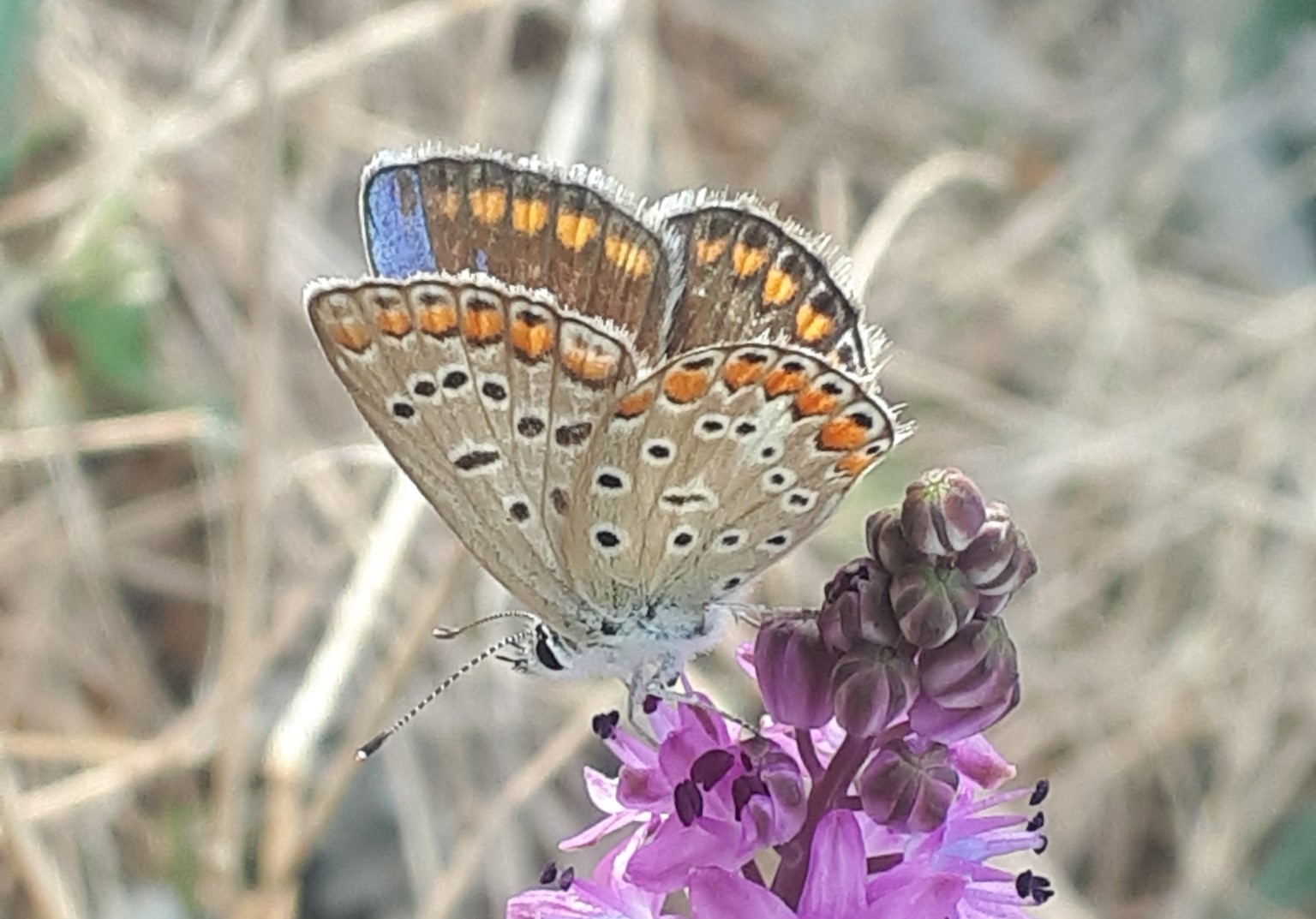
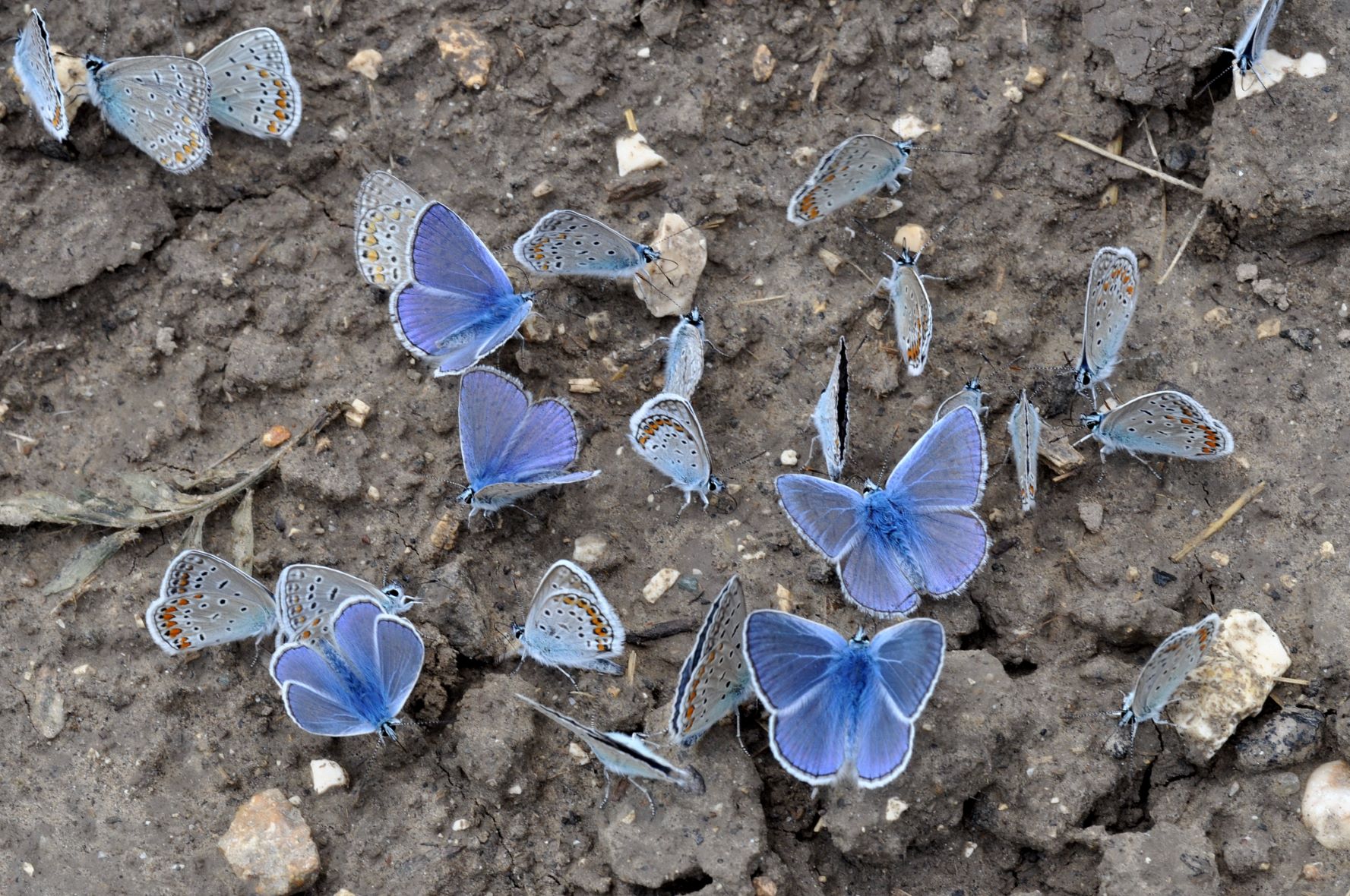 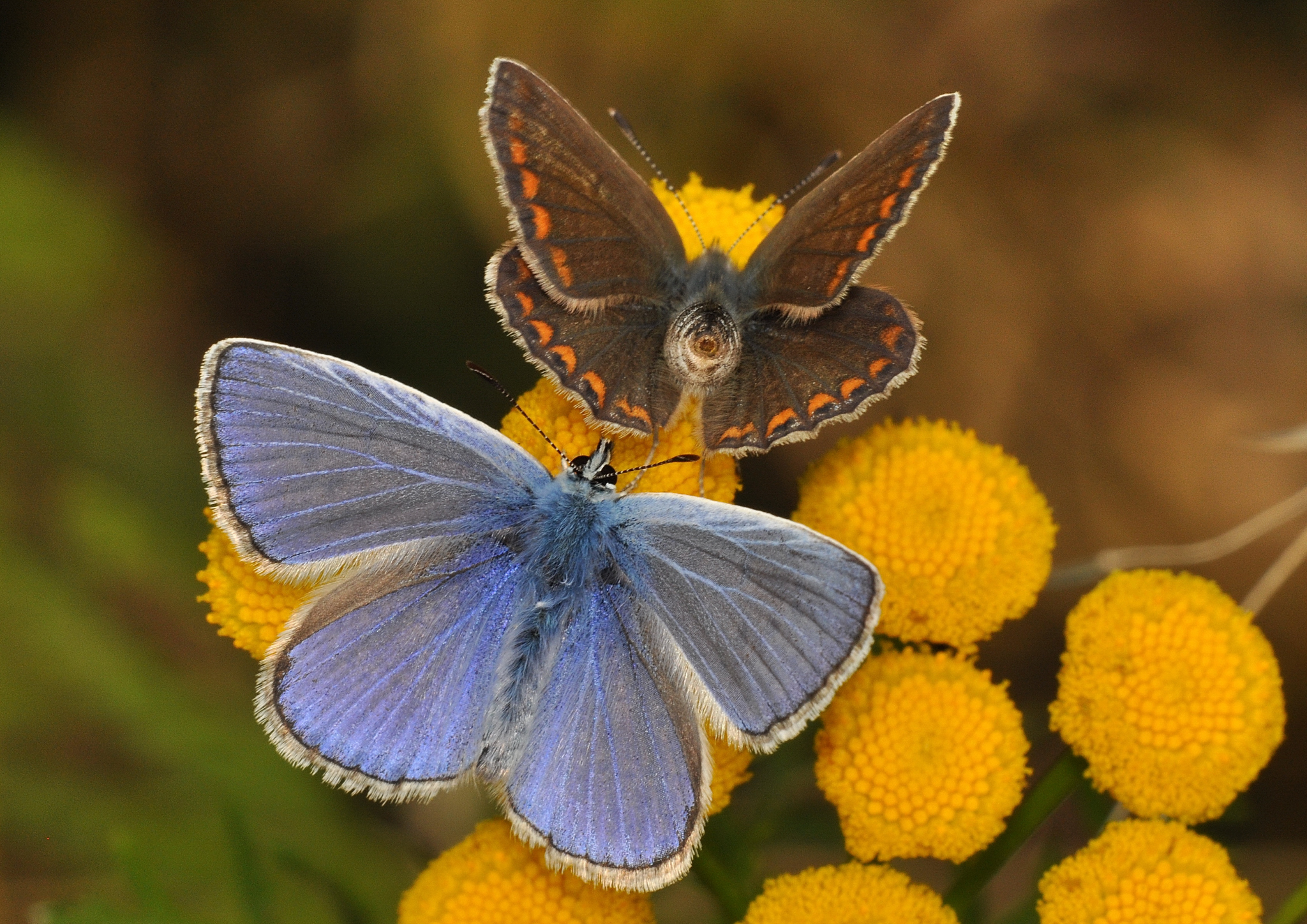
 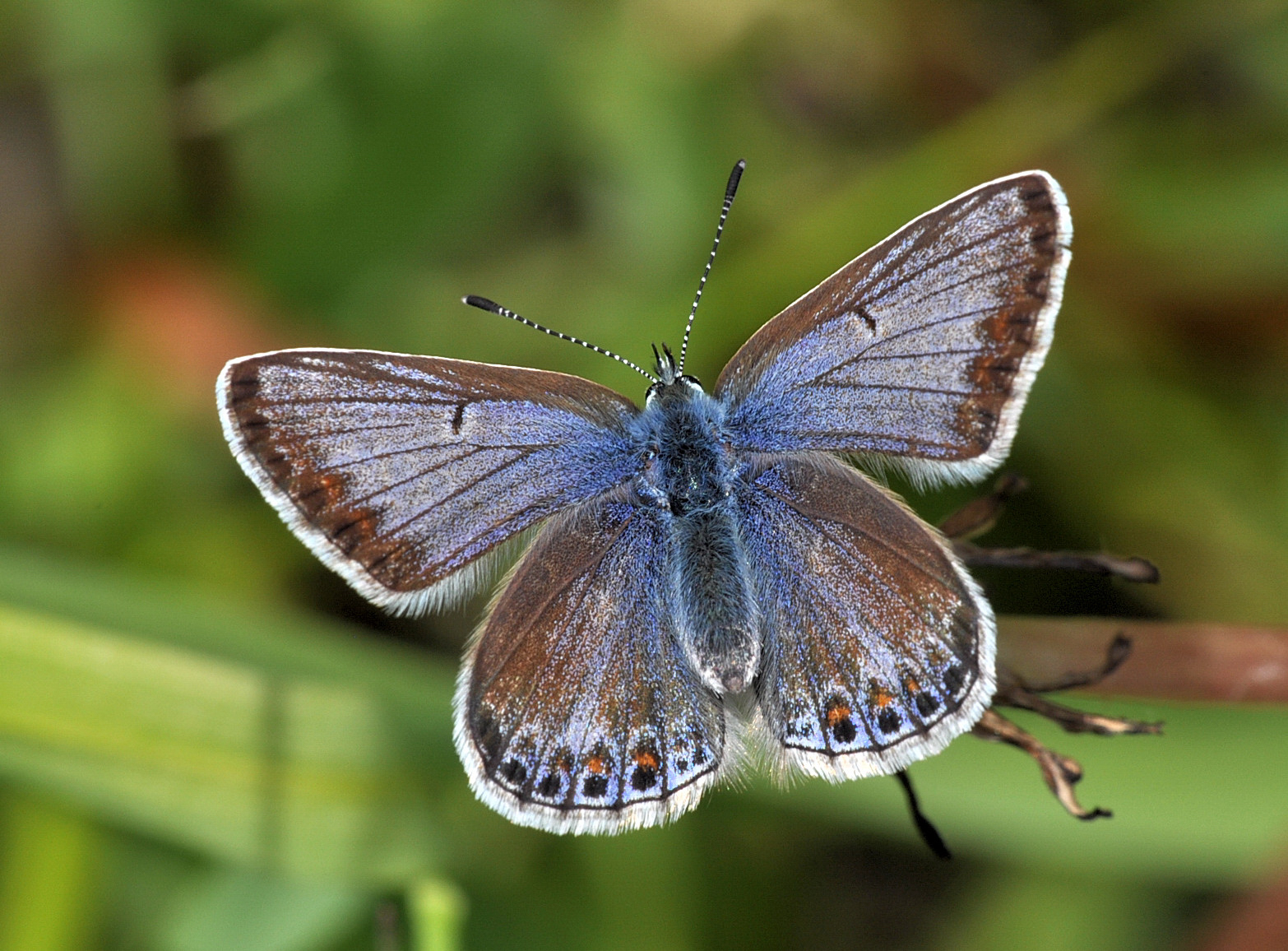
 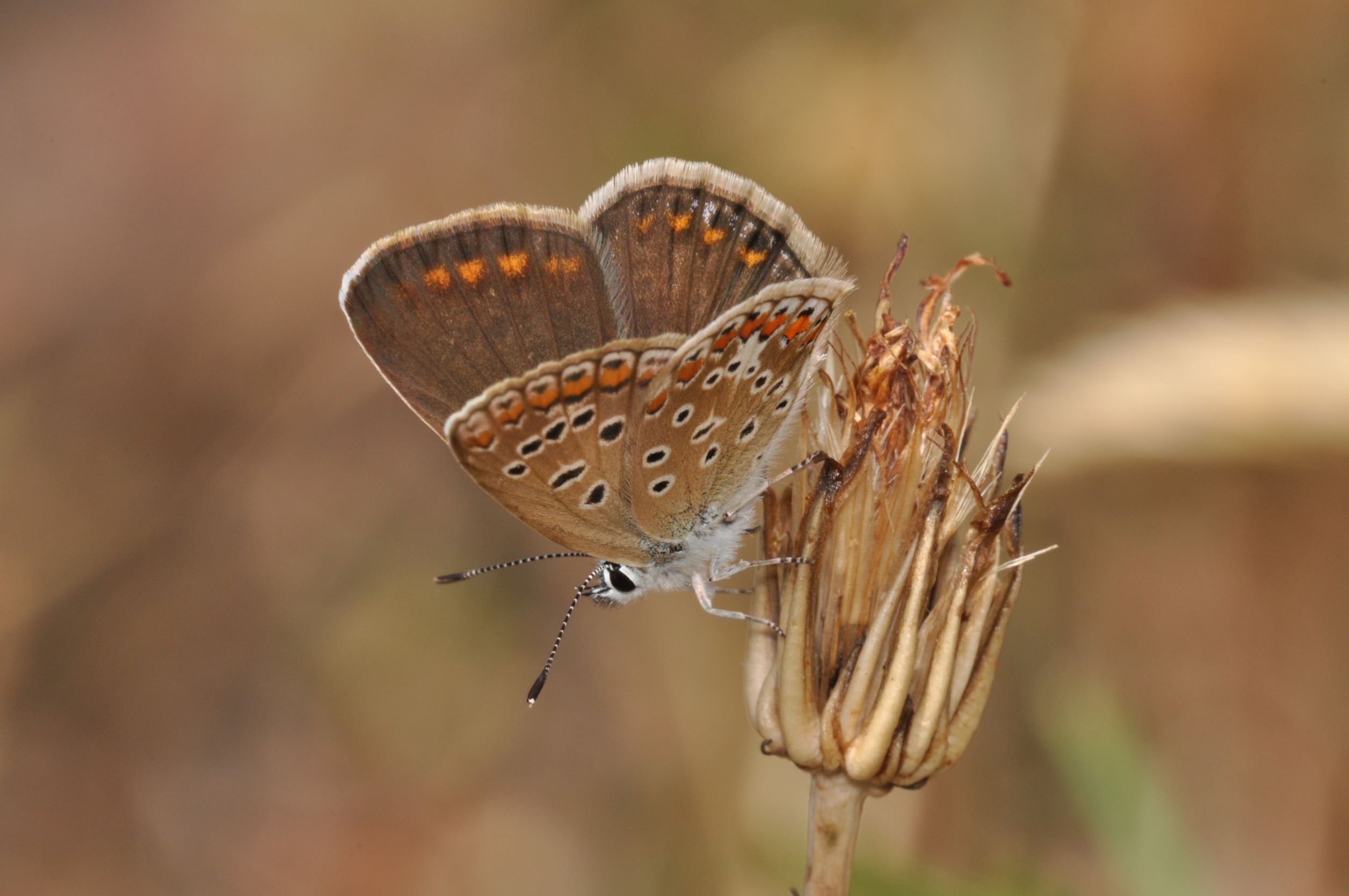
1a. Polyommatus icarus, distribution map (09.i.2025).  Historical data ; Historical data ;  Additional data from the 2018 update ; Additional data from the 2018 update ;  New observations since the 2018 update. New observations since the 2018 update.
1b. Polyommatus icarus mozaic specimen, mainly female appearance. Shkodër, Albania (© Joy Opitz)
1c. Polyommatus icarus mud puddling. Romania (© Sylvain Cuvelier)
1d. Polyommatus icarus courtship. Belgium (© Sylvain Cuvelier)
1e. Polyommatus icarus ♀ with bluish suffusion. Belgium (© Sylvain Cuvelier)
1f. Polyommatus icarus ♀ upperside, blue morph. Belgium (© Sylvain Cuvelier)
1f. Polyommatus icarus ♂ underside. Mallakastër, Albania (© Geolilnd Cobaj)
1g. Polyommatus icarus ♀ lateral, brown morph. Greece (© Sylvain Cuvelier)
Description
♂♂
Small butterfly. Fw: 14-18 mm.
Ups: blue gc, narrow dark marginal border, no androconial scales.
Uph: rarely antemarginal dots.
Uns: grey gc, blue-green basal flush, usual markings well developed, orange submarginal lunules often only on hw.
Unf: cell-spot and second basal spot (rarely absent: forma icarinus)
♀♀
Ups: brown gc, often well developed orange submarginal lunules, regularly forms with blue flush in basal and discal area, rarely even wider.
Uns: brown gc, all markings better developed.
Similar species
Compare Polyommatus eros and Aricia anteros.
Typical for Polyommatus icarus are:
Ups:  ♂♂ fine black marginal line. ♂♂ fine black marginal line.
Ups:  ♂♂ violet-blue gc. ♂♂ violet-blue gc.
Upf:  ♂♂ androconia absent, no discal spot. ♂♂ androconia absent, no discal spot.
Upf:  ♀♀ brown gc. ♀♀ brown gc.
Ups:  ♀♀ partial blue or extensive blue suffusion. ♀♀ partial blue or extensive blue suffusion.
Upf:  ♀♀ black discal spot. ♀♀ black discal spot.
Unf:  cell-spot and second basal spot in s1b (careful for rare P. icarus forma icarinus, lacking cell-spot) cell-spot and second basal spot in s1b (careful for rare P. icarus forma icarinus, lacking cell-spot)
Unh:  black pd spot in s6 not displaced. black pd spot in s6 not displaced.
Unh:  variable orange sm lunules. variable orange sm lunules.
Check other Polyommatus.
Typical for Polyommatus icarus are:
Ups:  ♂♂ fine black marginal line. ♂♂ fine black marginal line.
Upf:  ♂♂ androconia absent. ♂♂ androconia absent.
Upf:  ♀♀ quite complete row of variable orange sm lunules. ♀♀ quite complete row of variable orange sm lunules.
Ups:  ♀♀ brown gc, partial blue or extensive blue suffusion. ♀♀ brown gc, partial blue or extensive blue suffusion.
Unf:  cell-spot and second basal spot in s1b (!!! rarely absent in P. icarus forma icarinus) cell-spot and second basal spot in s1b (!!! rarely absent in P. icarus forma icarinus)
Unf:  variable orange sm lunules. variable orange sm lunules.
Unh:  better developed orange sm lunules. better developed orange sm lunules.
Unh:  ♀♀ brown gc. ♀♀ brown gc.
 
Life cycle
Adults: spring generation, followed by continuous summer generations from March to November.
Egg: 5-12 days.
Caterpillar: in summer 21-57 days, overwintering as L3 larva in the litter layer (34-46 weeks)
Pupa: 9-24 days.
Habitat
Polyommatus icarus inhabits a broad variety of flowery grasslands even in urban and agricultural areas from lowland up to above 2000 m a.s.l.
Spatial requirement modest, population density often high.
Foodplants
Caterpillars feed on Lotus sp., Medicago sp., Securigera varia and Trifolium sp., also mentioned are Helianthemum sp.
Butterflies are nectaring on all kind of flowers.
Distribution
Albania: widespread.
Balkan: AL - BG - BIH - GR - HR - NMK - MNE - RKS - RO - SLO - SRB
Europe: IB - IT - ALP - BAL - NWE - UK - SCA - EEU
Asia Minor, Near East, Transcaucasia, Caucasus and further east.
Conservation status
Polyommatus icarus is not endangered.
Albanian Red List: NE.
IUCN Red List, category at the Mediterranean level: LC.
Useful links
Bink 2015
Pyrgus.de
Lepiforum
Euroleps
|
 xx
xx 





 Historical data ;
Historical data ;  Additional data from the 2018 update ;
Additional data from the 2018 update ;  New observations since the 2018 update.
New observations since the 2018 update.